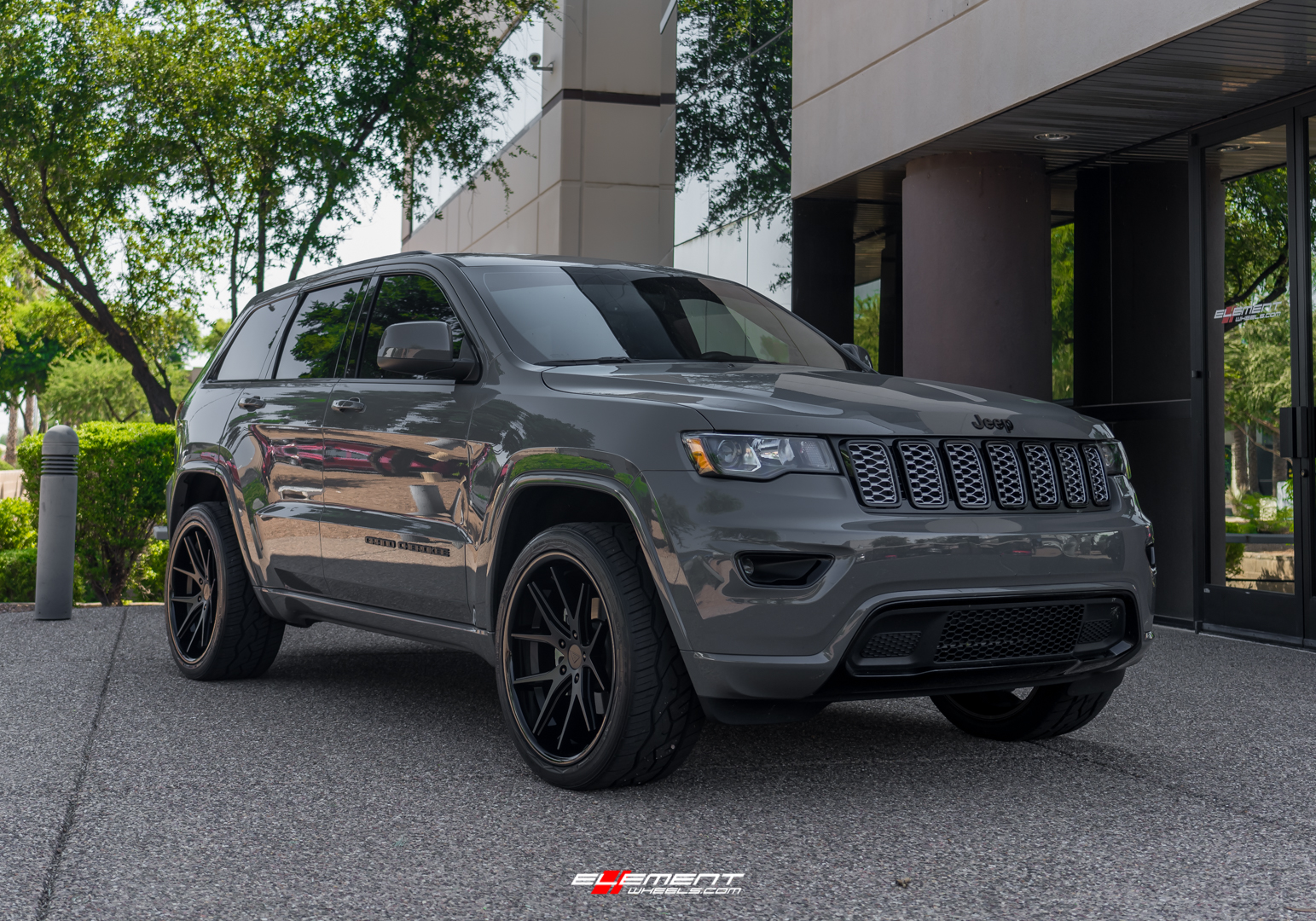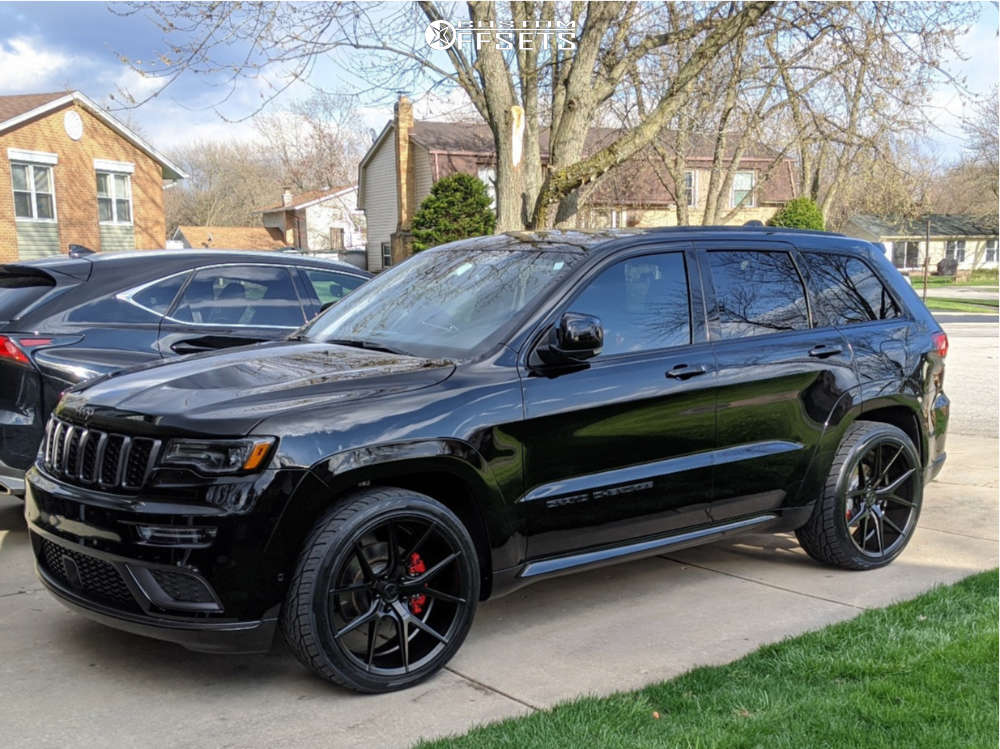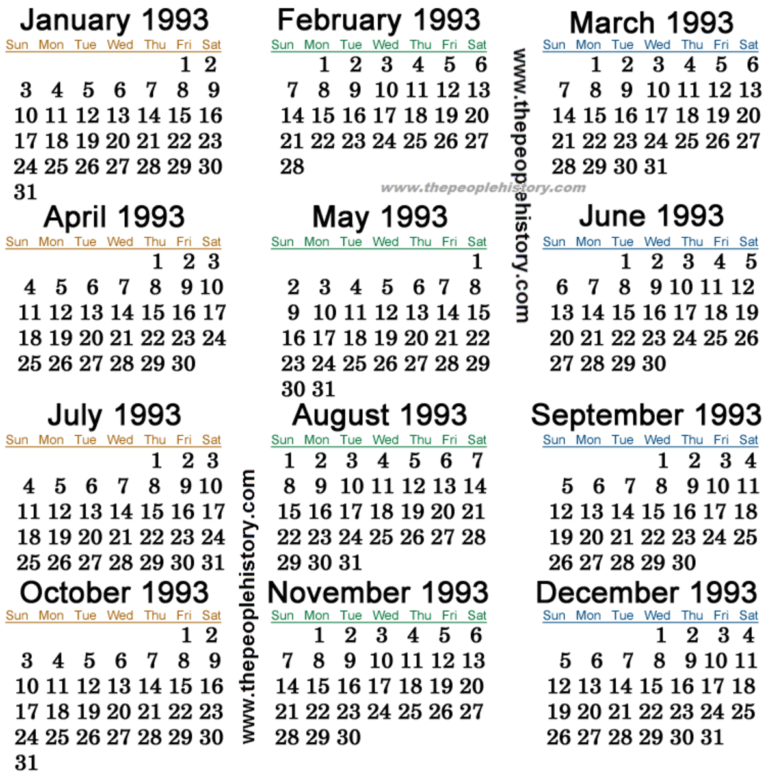Jeep Grand Cherokee Wheels: The Ultimate Guide to Enhancing Your Ride
Jeep Grand Cherokee Wheels: The Ultimate Guide to Enhancing Your Ride jeeps.truckstrend.com
The Jeep Grand Cherokee is more than just an SUV; it’s an icon of capability, luxury, and adventure. From traversing rugged trails to cruising city streets in style, its performance and aesthetics are deeply intertwined with one crucial component: its wheels. Far from being mere functional parts, Grand Cherokee wheels play a pivotal role in defining the vehicle’s stance, handling, safety, and overall character. Choosing the right set of wheels is not just about looks; it’s about optimizing your Grand Cherokee for your specific lifestyle, whether that means enhancing off-road prowess, boosting on-road performance, or simply making a statement. This comprehensive guide will delve into everything you need to know about Jeep Grand Cherokee wheels, helping you make informed decisions to elevate your driving experience.
Jeep Grand Cherokee Wheels: The Ultimate Guide to Enhancing Your Ride
Understanding Grand Cherokee Wheel Specifications: The Foundation of Fitment
Before diving into styles and materials, it’s crucial to grasp the technical specifications that dictate whether a wheel will fit and perform correctly on your Grand Cherokee. Ignoring these can lead to costly mistakes, compromised safety, and poor driving dynamics.
- Bolt Pattern (PCD – Pitch Circle Diameter): This refers to the number of lug holes and the diameter of the imaginary circle that passes through their centers. For most modern Jeep Grand Cherokees (WK, WK2, WL generations), the standard bolt pattern is 5x127mm (or 5×5 inches). This means there are 5 lug nuts, and the bolts are spaced on a 127mm diameter circle. Using a wheel with an incorrect bolt pattern is a critical safety issue and will prevent proper installation.
- Diameter (Wheel Size): Measured in inches, this is the overall size of the wheel from one edge to the other (e.g., 17-inch, 20-inch, 22-inch). While larger diameters often look more aggressive and can accommodate larger brake calipers, they typically require lower-profile tires, which can affect ride comfort and durability, especially off-road.
- Width: Also measured in inches, this is the measurement across the wheel’s barrel, from bead seat to bead seat (e.g., 8.0 inches, 9.5 inches). Wheel width must be compatible with the tire width to ensure proper tire seating and optimal contact patch.
- Offset: This is the distance (in millimeters) from the wheel’s mounting surface (where it bolts to the hub) to the true centerline of the wheel.
- Positive Offset: The mounting surface is closer to the front (outboard) face of the wheel. This tucks the wheel further into the fender well. Most factory Grand Cherokee wheels have a positive offset.
- Negative Offset: The mounting surface is closer to the back (inboard) face of the wheel. This pushes the wheel further out from the fender, creating a wider stance. Common for off-road applications.
- Zero Offset: The mounting surface is exactly at the wheel’s centerline.
Incorrect offset can cause rubbing issues with suspension components or fender liners, negatively impact handling, and even place undue stress on wheel bearings.

- Backspacing: Closely related to offset, backspacing is the distance from the wheel’s mounting surface to the back edge of the wheel. It’s often easier for off-roaders to visualize clearance. More backspacing means the wheel sits further in, less backspacing means it sits further out.
- Center Bore: This is the hole in the center of the wheel that fits over the vehicle’s hub. It’s crucial for the wheel to be hub-centric, meaning the wheel’s center bore perfectly matches the vehicle’s hub diameter. Most Grand Cherokees have a hub bore of 71.5mm. If an aftermarket wheel has a larger center bore, hub-centric rings are required to ensure the wheel is centered on the hub, preventing vibrations and ensuring proper load distribution.

Types of Jeep Grand Cherokee Wheels: Options for Every Purpose

The market offers a vast array of wheels for the Grand Cherokee, catering to diverse needs, aesthetics, and budgets.
1. OEM (Original Equipment Manufacturer) Wheels
These are the wheels that come standard on or are offered as options by Jeep. They are designed and tested specifically for the Grand Cherokee, ensuring perfect fitment, compatibility with vehicle systems (like TPMS), and adherence to strict quality standards.
- Pros: Guaranteed fit, reliability, often integrated styling, maintain resale value.
- Cons: Limited design choices, can be expensive to replace, may not offer the aggressive look or specific performance features of aftermarket options. Examples include the various alloys found on Laredo, Limited, Overland, Summit, SRT, and Trackhawk models.
2. Aftermarket Wheels
The aftermarket provides an enormous selection, allowing for personalization and performance tuning.
-
Materials & Construction:
- Cast Alloy Wheels: The most common and affordable type. Molten aluminum is poured into a mold.
- Pros: Relatively inexpensive, wide variety of designs.
- Cons: Heavier than other alloy types, less dense, can be more prone to cracking under severe impact.
- Flow-Formed (Rotary Forged) Wheels: A hybrid process where the wheel face is cast, and the barrel is spun and heated, compressing the aluminum.
- Pros: Lighter and stronger than cast wheels, good balance of performance and cost.
- Cons: More expensive than cast, not as strong as fully forged.
- Forged Wheels (Monoblock, 2-Piece, 3-Piece): Made from a solid block of aluminum, heated, and subjected to immense pressure.
- Pros: Lightest, strongest, and most durable, superior performance characteristics (reduced unsprung weight).
- Cons: Significantly more expensive, often custom-made.
- Steel Wheels: Less common for Grand Cherokees, but sometimes used for heavy-duty off-road or winter applications due to their robustness and repairability.
- Pros: Very durable, inexpensive, easily repaired.
- Cons: Very heavy, limited designs, not typically seen on higher trims.
- Cast Alloy Wheels: The most common and affordable type. Molten aluminum is poured into a mold.
-
Design & Style: Aftermarket wheels come in an endless variety of finishes (machined, painted, chrome, polished, bronze, black), spoke patterns, and overall aesthetics, allowing owners to customize their Grand Cherokee to reflect their personal style – from stealthy black-on-black to flashy chrome or rugged off-road designs.
Choosing the Right Wheels for Your Grand Cherokee: Practical Advice
Selecting the perfect wheels involves balancing your specific needs with aesthetic preferences and budget.
-
Define Your Purpose:
- Daily Driver/Aesthetics: Focus on style, finish, and perhaps a slight increase in diameter for a more refined look. Comfort is key, so avoid excessively large wheels with ultra-low profile tires.
- Off-Roading: Prioritize durability, impact resistance, and adequate sidewall for tires. Smaller diameter wheels (e.g., 17-18 inches) paired with larger, aggressive all-terrain or mud-terrain tires are ideal. Consider beadlock-capable wheels for extreme low-pressure crawling.
- Performance/Track (e.g., SRT/Trackhawk): Lightweight, strong forged or flow-formed wheels are paramount to reduce unsprung weight, improving acceleration, braking, and handling. Ensure adequate clearance for large brake calipers.
- Towing/Heavy Duty: Strength and load rating are critical. Ensure the wheels can handle the vehicle’s GVWR and GCWR.
-
Consider Tire Compatibility: Your wheel choice directly dictates your tire options. A larger wheel diameter generally means a shorter tire sidewall, while a smaller wheel allows for more tire sidewall. The overall tire diameter should remain close to stock to avoid issues with speedometer accuracy, transmission shift points, and ABS/traction control systems.
-
Factor in Suspension Modifications: If you have a lift kit or plan to install one, this opens up possibilities for larger wheel and tire combinations. Conversely, if your Grand Cherokee is lowered, you’ll need to be very mindful of offset and tire size to prevent rubbing.
-
Check Brake Clearance: Performance Grand Cherokees like the SRT and Trackhawk have massive brake calipers. Any aftermarket wheel must be tested or verified to clear these components. Not all wheels will fit.
-
Set a Budget: Wheel prices vary dramatically based on material, construction, brand, and finish. Be realistic about what you can afford, remembering that tires, TPMS sensors, mounting, and balancing are additional costs.
-
Verify Specifications Meticulously: Double-check the bolt pattern, diameter, width, offset, and center bore against your Grand Cherokee’s requirements. Use online fitment guides or consult with reputable wheel specialists.
Installation and Maintenance: Ensuring Longevity and Safety
Proper installation and ongoing maintenance are crucial for the safety, performance, and lifespan of your Grand Cherokee wheels.
Installation
- Professional Installation Recommended: While theoretically a DIY job, professional mounting and balancing ensure the wheels are correctly seated, torqued, and balanced. This prevents vibrations, premature tire wear, and potentially dangerous wheel detachment.
- Torque Specifications: Always tighten lug nuts to the manufacturer’s specified torque settings using a torque wrench. Over-tightening can strip threads or warp rotors; under-tightening can lead to loose wheels. For most Grand Cherokees, torque specs are typically around 100-110 ft-lbs (135-150 Nm), but always verify for your specific model year. Re-check torque after 50-100 miles.
- TPMS (Tire Pressure Monitoring System): Modern Grand Cherokees use TPMS sensors in each wheel. When changing wheels, these sensors often need to be transferred to the new wheels or new sensors installed and programmed to the vehicle.
Maintenance
- Regular Cleaning: Clean your wheels regularly with appropriate wheel cleaner (acid-free for most finishes) to remove brake dust, dirt, and road grime. These contaminants can etch and damage finishes over time.
- Avoid Abrasive Cleaners/Tools: Use soft brushes or cloths. Avoid steel wool or harsh chemicals that can scratch or damage the finish.
- Protect Finishes: Apply a wheel sealant or wax to protect the finish and make cleaning easier.
- Tire Rotation and Balancing: Rotate your tires every 5,000-7,500 miles (or as per your tire manufacturer’s recommendation) to ensure even wear. Have your wheels balanced whenever new tires are mounted or if you notice vibrations.
- Alignment Checks: Get your vehicle’s alignment checked periodically, especially after hitting large potholes or installing new suspension components, as proper alignment contributes to even tire wear and optimal handling.
Potential Challenges and Solutions
Even with careful planning, challenges can arise.
- Rubbing Issues: If wheels or tires rub against fender liners or suspension components, it’s usually due to incorrect offset, tire size, or lack of suspension clearance (e.g., no lift kit).
- Solution: Adjust offset (spacers or different wheels), downsize tires, or consider a suspension lift/leveling kit.
- Brake Caliper Clearance: Especially with large performance brakes (SRT/Trackhawk).
- Solution: Test fit before purchasing, or choose wheels specifically designed for large brake clearance. Spacers can sometimes help but should be used cautiously.
- Vibrations: Often caused by improper balancing, bent wheels, or incorrect hub-centric fitment.
- Solution: Re-balance wheels, inspect for damage, install hub-centric rings if needed.
- TPMS Malfunctions: New sensors not programmed, or old sensors not compatible.
- Solution: Have a qualified technician program new sensors or verify compatibility of transferred sensors.
- Warranty Concerns: Modifying wheels can sometimes affect certain warranty claims related to suspension or drivetrain, though generally, it won’t void the entire vehicle warranty.
- Solution: Consult with your dealership before major modifications, especially if your Grand Cherokee is new.
Jeep Grand Cherokee Wheels: Estimated Price Ranges
Prices for Jeep Grand Cherokee wheels vary significantly based on material, construction, brand, size, and finish. The table below provides estimated price ranges per wheel to give you a general idea. Always get specific quotes for the wheels you are considering.
| Wheel Type/Category | Material/Construction | Size Range (Diameter x Width) | Estimated Price Range (Per Wheel USD) | Key Characteristics |
|---|---|---|---|---|
| OEM Replica/Basic Aftermarket | Cast Alloy | 18"x8.0" to 20"x9.0" | $150 – $350 | Affordable, wide design variety, good for daily use. |
| Standard Aftermarket Alloy | Cast Alloy | 17"x8.0" to 22"x10.0" | $250 – $500 | Diverse styles, improved designs over basic replicas. |
| Performance/Flow-Formed | Flow-Formed (Rotary Forged) | 19"x8.5" to 22"x11.0" | $400 – $800 | Lighter, stronger, better performance for the price. |
| Premium Forged | Monoblock Forged | 20"x9.0" to 24"x12.0" | $800 – $2000+ | Lightest, strongest, custom finishes, ultimate performance. |
| Off-Road Specific | Cast/Flow-Formed Alloy | 17"x8.5" to 18"x9.0" | $300 – $600 | Durable, often negative offset, sometimes beadlock-capable. |
| SRT/Trackhawk Replica | Cast Alloy | 20"x10.0" to 22"x10.0" | $300 – $600 | Mimics OEM performance looks, generally heavier. |
Note: These are estimated ranges for a single wheel and do not include tires, lug nuts, TPMS sensors, mounting, balancing, or shipping costs. Prices can fluctuate based on brand, finish, and market conditions.
Frequently Asked Questions (FAQ) about Jeep Grand Cherokee Wheels
Q1: What is the standard bolt pattern for a Jeep Grand Cherokee?
A1: Most modern Jeep Grand Cherokees (WK, WK2, WL generations) use a 5x127mm (or 5×5 inch) bolt pattern. Always double-check for your specific model year.
Q2: Can I put larger wheels on my Grand Cherokee?
A2: Yes, within limits. Many Grand Cherokee owners upgrade to larger diameter wheels (e.g., from 18-inch to 20-inch or even 22-inch). However, you must ensure proper offset, tire compatibility (overall diameter should remain similar to stock), and brake caliper clearance. Too large can cause rubbing or affect ride quality.
Q3: Do I need new TPMS sensors when I get new wheels?
A3: If your Grand Cherokee is equipped with TPMS (most modern ones are), you will need to either transfer your existing sensors to the new wheels or purchase new compatible sensors. New sensors will likely need to be programmed to your vehicle’s system.
Q4: What’s the difference between offset and backspacing?
A4: Both describe how far a wheel sits relative to its mounting surface. Offset is the distance from the mounting surface to the wheel’s centerline, while backspacing is the distance from the mounting surface to the wheel’s inner edge. They are related measurements that help determine how far a wheel will stick out or tuck in.
Q5: Will changing my wheels void my warranty?
A5: Generally, changing wheels alone will not void your entire vehicle warranty. However, if a failure occurs that can be directly attributed to the aftermarket wheels (e.g., a wheel bearing failure due to an aggressive offset, or a suspension component failure due to excessive unsprung weight), the dealership might deny a warranty claim for that specific component. It’s always best to choose reputable brands and ensure proper fitment.
Q6: How often should I balance my wheels?
A6: Wheels should be balanced every time new tires are mounted. It’s also a good idea to have them checked and re-balanced if you notice persistent vibrations, especially at highway speeds, or after hitting a significant pothole.
Conclusion: The Right Wheels, The Right Ride
Jeep Grand Cherokee wheels are more than just a functional necessity; they are a critical component that influences everything from the vehicle’s safety and performance to its aesthetic appeal and resale value. Understanding the technical specifications, exploring the diverse range of available types, and carefully considering your personal needs are paramount to making an informed decision.
Whether you’re aiming for rugged off-road capability, refined on-road elegance, or high-performance agility, the right set of wheels can transform your Grand Cherokee experience. Invest wisely, prioritize proper fitment and quality, and remember that ongoing maintenance is key to enjoying your chosen wheels for years to come. By taking the time to select and care for your Grand Cherokee wheels, you’re not just upgrading a part; you’re enhancing the very essence of your ride.




